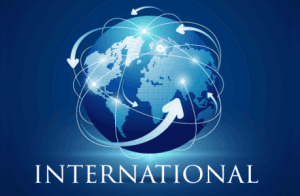 Economic reports recently released by two key global organizations present cautiously optimistic signs for worldwide recovery.
Economic reports recently released by two key global organizations present cautiously optimistic signs for worldwide recovery.
World Trade Organization
The World Trade Organization (WTO) reported on March 31 that prospects for a quick recovery in world trade have improved as merchandise trade expanded more rapidly than expected in the second half of last year.
According to new estimates from the WTO, the volume of world merchandise trade is expected to increase by 8.0% in 2021 after having fallen 5.3% in 2020, continuing its rebound from the pandemic-induced collapse that bottomed out in the second quarter of last year.
Trade growth should then slow to 4.0% in 2022, and the effects of the pandemic will continue to be felt as this pace of expansion would still leave trade below its pre-pandemic trend.
The relatively positive short-term outlook for global trade is marred by regional disparities, continued weakness in services trade, and lagging vaccination timetables, particularly in poor countries. COVID-19 continues to pose the greatest threat to the outlook for trade, as new waves of infection could easily undermine any hoped-for recovery.
“The strong rebound in global trade since the middle of last year has helped soften the blow of the pandemic for people, businesses, and economies,” WTO Director-General Ngozi Okonjo Iweala said. “Keeping international markets open will be essential for economies to recover from this crisis and a rapid, global and equitable vaccine roll-out is a prerequisite for the strong and sustained recovery we all need.”
Other main points in the report are:
• World gross domestic product (GDP) at market exchange rates should increase by 5.1% in 2021 and 3.8% in 2022, after contracting by 3.8% in 2020.
• Merchandise trade in nominal dollar terms fell in 2020 by 7% while commercial services exports declined by 20%.
• Falling oil prices led to a 35% contraction in trade in fuels in 2020.
• Travel services were down 63% in 2020 and are not expected to fully recover until the pandemic wanes.
International Monetary Fund
The World Economic Report released April 6 by the International Monetary Fund projects global growth at 6% in 2021, moderating to 4.4% in 2022.
The projections for 2021 and 2022 are stronger than in the October 2020 World Economic Outlook. The upward revision reflects additional fiscal support in a few large economies, the anticipated vaccine-powered recovery in the second half of 2021, and continued adaptation of economic activity to subdued mobility.
The high uncertainty surrounding the latest outlook relates to the path of the pandemic, the effectiveness of policy support to provide a bridge to vaccine-powered normalization, and the evolution of financial conditions.
Global prospects remain highly uncertain one year into the pandemic. New virus mutations and the accumulating human toll raise concerns, even as growing vaccine coverage lifts sentiment. Economic recoveries are diverging across countries and sectors, reflecting variation in pandemic-induced disruptions and the extent of policy support.
The outlook depends not just on the outcome of the battle between the virus and vaccines—it also hinges on how effectively economic policies deployed under high uncertainty can limit lasting damage from this unprecedented crisis.

